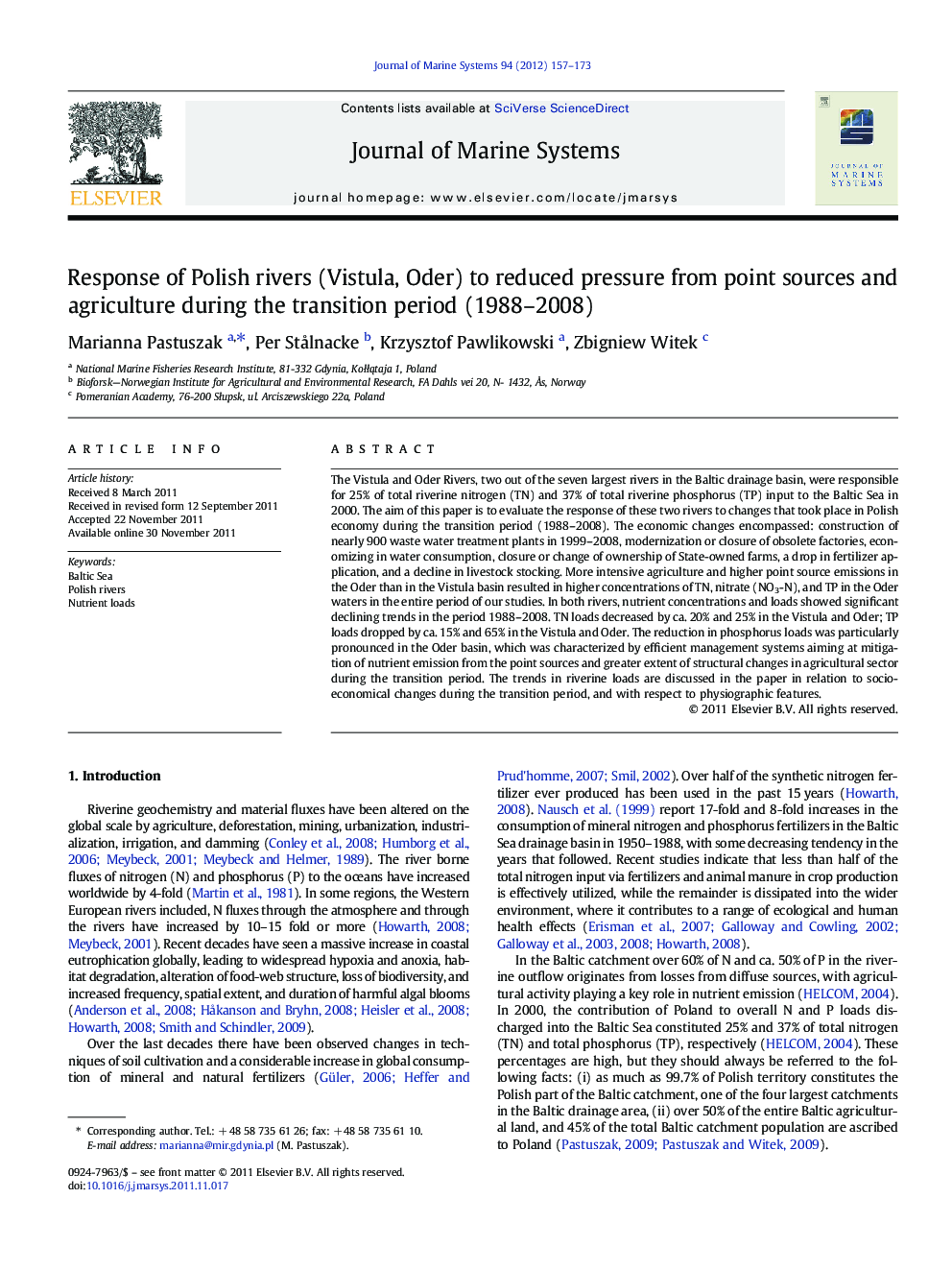| کد مقاله | کد نشریه | سال انتشار | مقاله انگلیسی | نسخه تمام متن |
|---|---|---|---|---|
| 4548254 | 1627320 | 2012 | 17 صفحه PDF | دانلود رایگان |

The Vistula and Oder Rivers, two out of the seven largest rivers in the Baltic drainage basin, were responsible for 25% of total riverine nitrogen (TN) and 37% of total riverine phosphorus (TP) input to the Baltic Sea in 2000. The aim of this paper is to evaluate the response of these two rivers to changes that took place in Polish economy during the transition period (1988–2008). The economic changes encompassed: construction of nearly 900 waste water treatment plants in 1999–2008, modernization or closure of obsolete factories, economizing in water consumption, closure or change of ownership of State-owned farms, a drop in fertilizer application, and a decline in livestock stocking. More intensive agriculture and higher point source emissions in the Oder than in the Vistula basin resulted in higher concentrations of TN, nitrate (NO3-N), and TP in the Oder waters in the entire period of our studies. In both rivers, nutrient concentrations and loads showed significant declining trends in the period 1988–2008. TN loads decreased by ca. 20% and 25% in the Vistula and Oder; TP loads dropped by ca. 15% and 65% in the Vistula and Oder. The reduction in phosphorus loads was particularly pronounced in the Oder basin, which was characterized by efficient management systems aiming at mitigation of nutrient emission from the point sources and greater extent of structural changes in agricultural sector during the transition period. The trends in riverine loads are discussed in the paper in relation to socio-economical changes during the transition period, and with respect to physiographic features.
► Poland is one of the largest exporters of nitrogen and phosphorus to the Baltic Sea.
► Agriculture and point sources play a key role in emission of nitrogen and phosphorus.
► Transformation period in Poland resulted in reduced pressure on natural environment.
► We examine trends in flow normalized concentrations and loads in the Vistula and Oder.
► Nutrient concentrations and loads showed significant declining trends in 1988–2008.
Journal: Journal of Marine Systems - Volume 94, June 2012, Pages 157–173